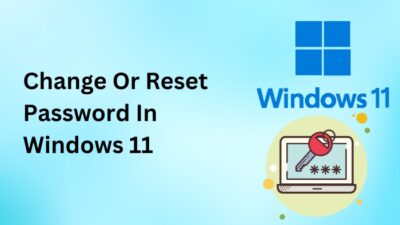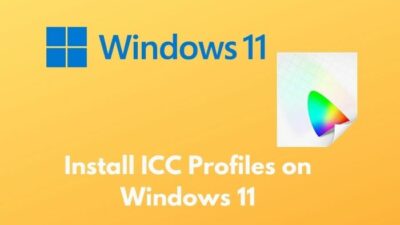Running one OS on your PC is usually enough, but there are times when it helps to have two separate versions on your device.
Because some software only works with an older version of Windows, or you want to compare the differences between Windows 10 pro and 10 home before switching from one version to another.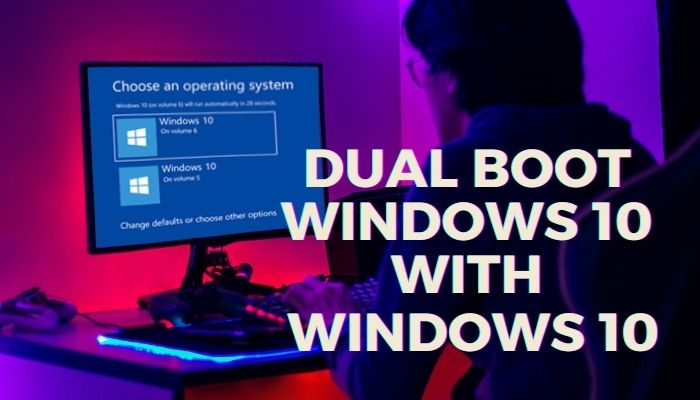
Thankfully, Windows supports dual booting. This article will show you the best way to dual-boot Windows 10. So without further due, let’s jump in.
How to Dual Boot Windows 10 with Windows 10
To dual-boot Windows 10 on the same hard drive, you need a minimum 8 GB bootable USB/flash drive, a free hard disk partition of 40 GB, and the latest version of the Windows 10 ISO file. You can download the ISO file from the Microsoft website using any browser.
In this portion, I will show you the steps to installing two versions of Windows 10 on a single hard drive. Let’s see how to do it.
Here are the steps to perform dual Boot Windows 10 on a single hard drive:
1. Download Windows 10 ISO File
First, you need to download the updated version of Windows 10 as an ISO file to dual boot. You can also download Windows 11 disk images and mount, burn, & create Windows 11 ISO files from Microsoft official website.
Here are the steps to download Windows 10 ISO file:
- Download the Windows media creation tool from Microsoft’s media creation webpage.
- Install the software and accept the terms and conditions of the software.
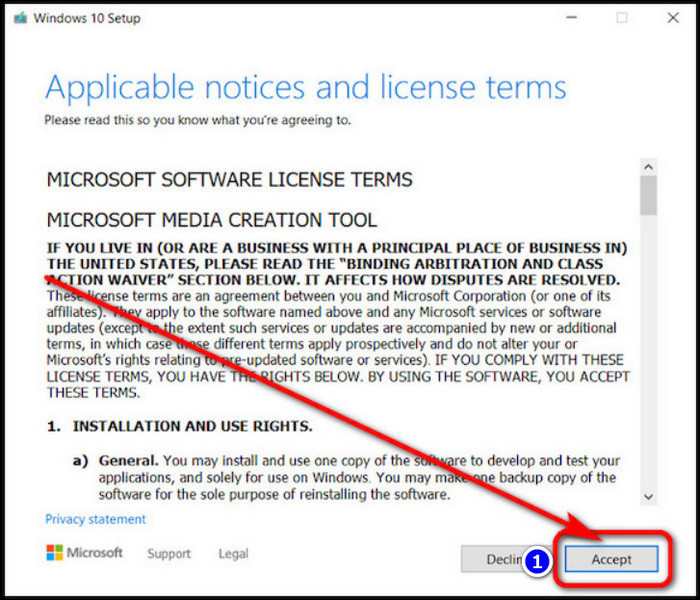
- Choose the Create installation media (USB flash drive, DVD, or ISO) for another PC option and click Next.
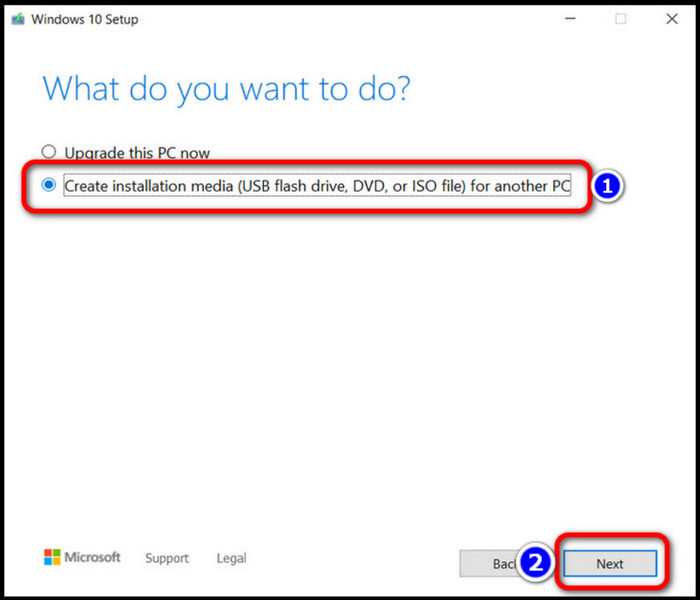
- Choose the language, architecture, and edition as you like, then select Next.
- Select the ISO file option in the Choose which media to use window and again press Next.
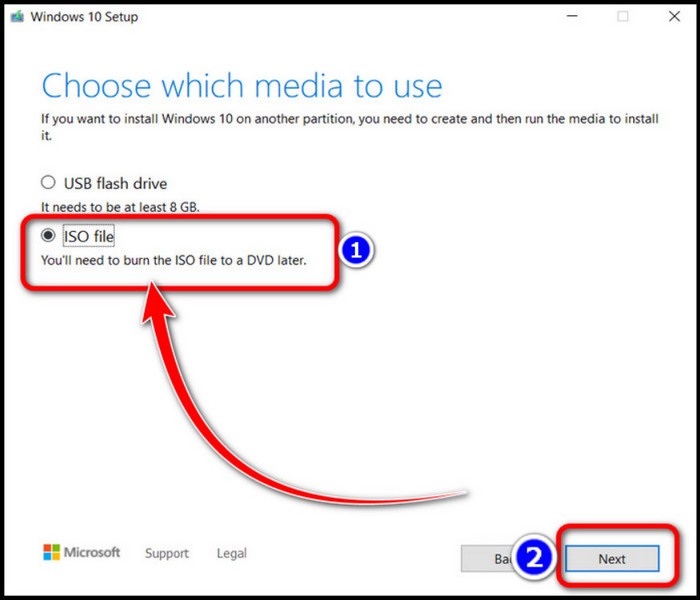
- Save the file on your PC.
However, ensure a steady internet connection while downloading the ISO file. Otherwise, you will face this pc can’t run windows issues for both Windows 10 and 11.
2. Create a New Partition
You need a new empty HDD section to install the 2nd Windows 10. I recommend creating a new drive with at least 40GB of space.
You can create it from the Disk management option of your PC. Let’s see how to do it.
Here are the steps to create a new partition in your hard drive:
- Right-click on the Start icon and select the Disk Management menu.
- Right-click on the drive with the most empty space and choose the Shrink Volume option.
- Set the preferred drive space and select the Shrink option.
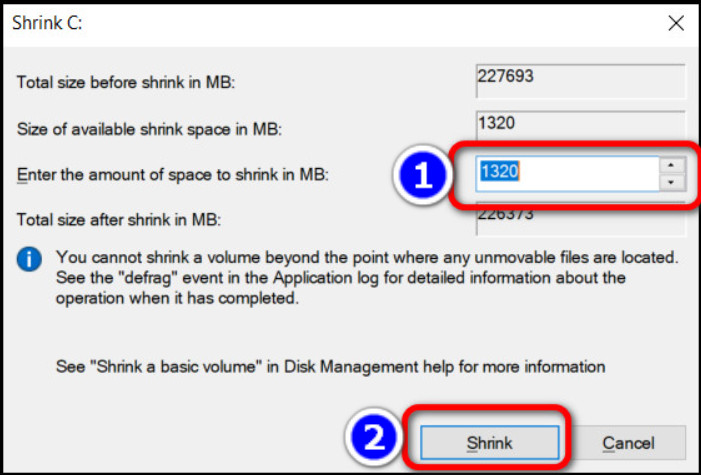
- Go back to the Disk Management window and right-click on the black labeled space.
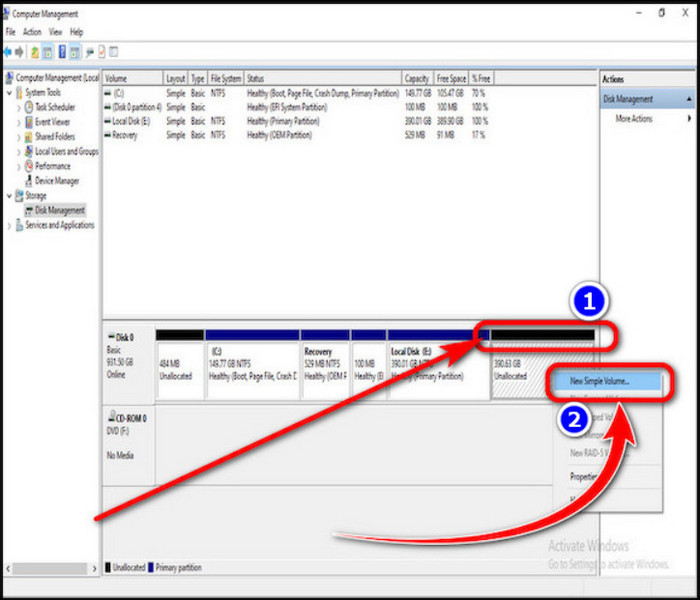
- Select New Simple Volume from the options.
- Choose NTFS for File System and hit Next.
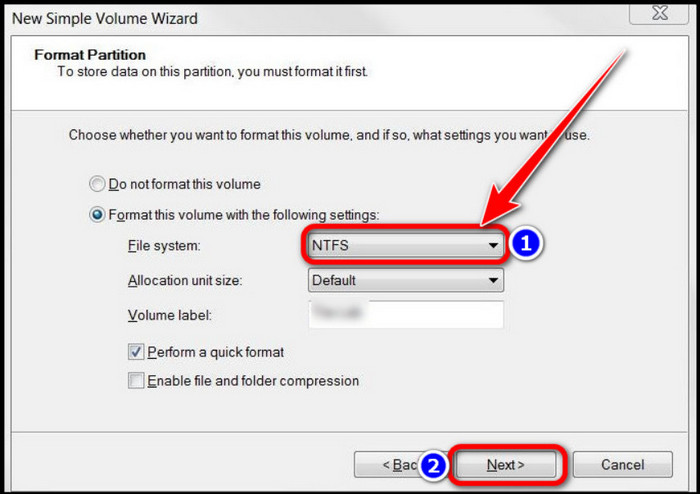
- Right-click on the newly created disk and go to its Properties.
- Switch to the Volumes tab and remember the Partition style.
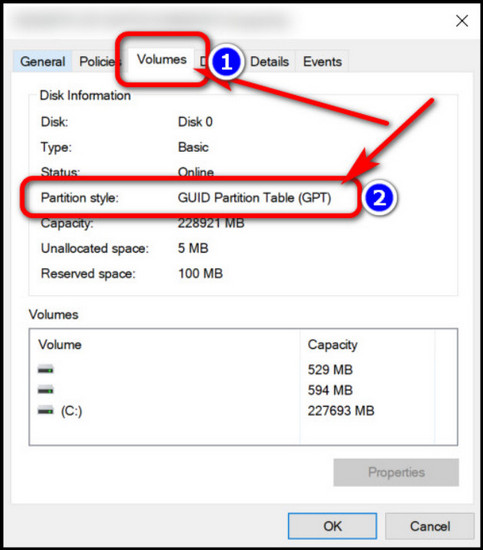
3. Boot your USB Drive
After downloading the ISO file, you need to paste the file into a bootable USB device. Usually, all standard USB devices can be bootable.
Now, I will show you the steps to make any USB drive using Rufus software. You can also make your device bootable from the Command prompt. But, this method has some risks, including permanently damaging the USB/flash drive.
Here are the steps to boot your USB device using Rufus:
- Download and install Rufus on your PC.
- Plug in your USB device and open the application.
- Press Select and choose your downloaded ISO file of Windows 10.
- Select GPT or MBR as per your PC’s partition type.
- Hit the START button from the bottom section.
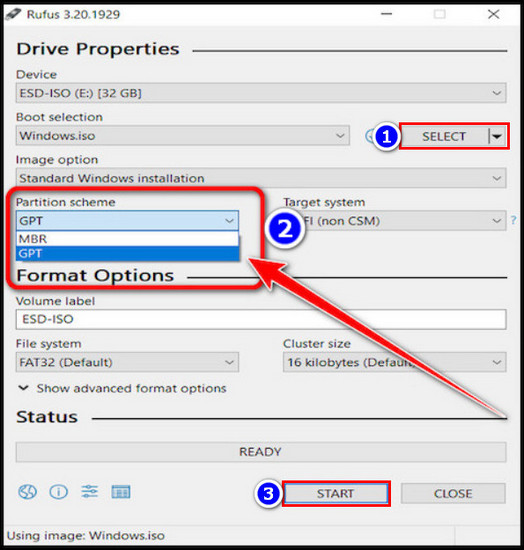
After the steps, Rufus will start the flashing process, which will take a few minutes to complete.
I recommend this app to create a bootable USB disk because it’s intuitive, easy to use, and ideal for all sorts of users.
4. Disable Secure Boot & Fast Boot
After loading your ISO file into your USB drive, you need to disable the Secure Boot & Fast Boot options from your BIOS. Because the Secure boot option usually prevents two operating systems from being installed simultaneously.
While booting the computer, you can enter BIOS or UEFI in your Windows PC by pressing the keys such as F2, F10, F12, or Del and disabling the Secure Boot & Fast Boot form.
However, many Windows 11 users faced the “Secure Boot Enabled But Windows 11 Says It’s Not” issue while disabling the options. Follow our guide to solve it quickly.
In this section, I will show you how to disable the secure boot & fast boot options. Let’s jump in.
Here are the steps to disable secure boot & fast boot from BIOS
- Open the BIOS using the key, such as F2, F10, F12, or Del, depending on your motherboard.
- Set the USB drive as the primary boot device.
- Disable the Secure Boot and Fast Boot options.
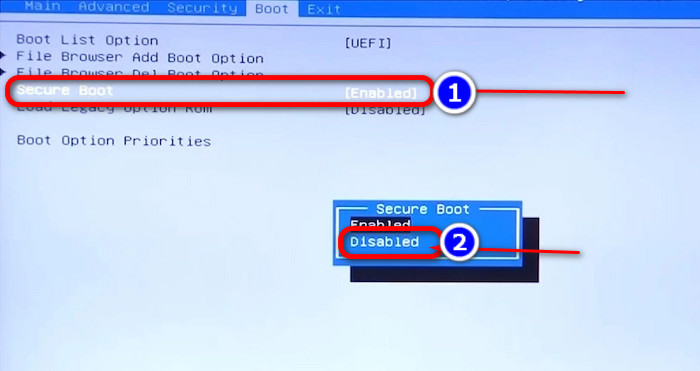
You may see these options differ depending on the brand of your motherboard. So before proceeding, be sure to go through the manual carefully.
5. Install Windows
After you disable the secure boot & fast boot, follow the steps to install the Windows. Let’s see the steps in detail.
Here is the method to install a 2nd Windows on your PC:
- Plug in the bootable USB drive and restart the PC.
- Click the Install Now button.
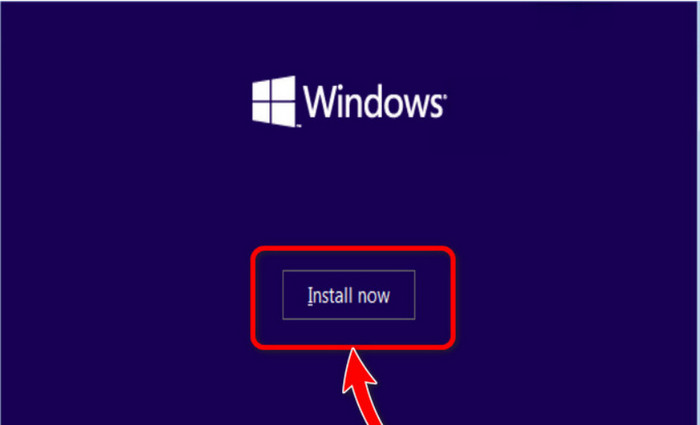
- Select I don’t have a product key option at the bottom.
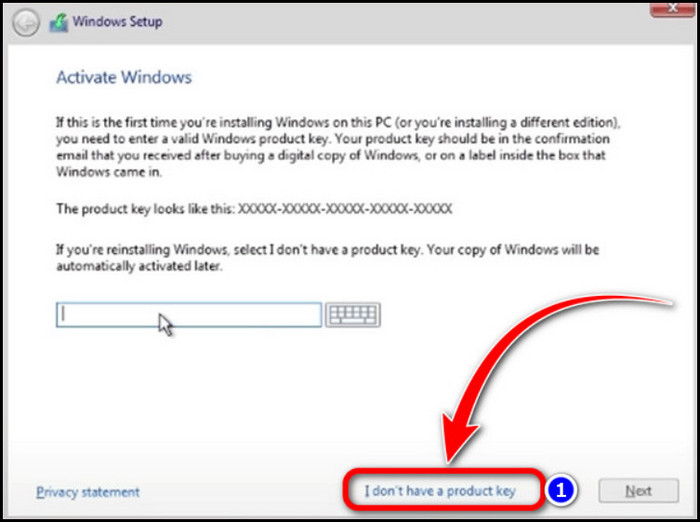
- Select the version of Windows you want to install and click Next.
- Choose the Custom: Install Windows only (advanced) option.
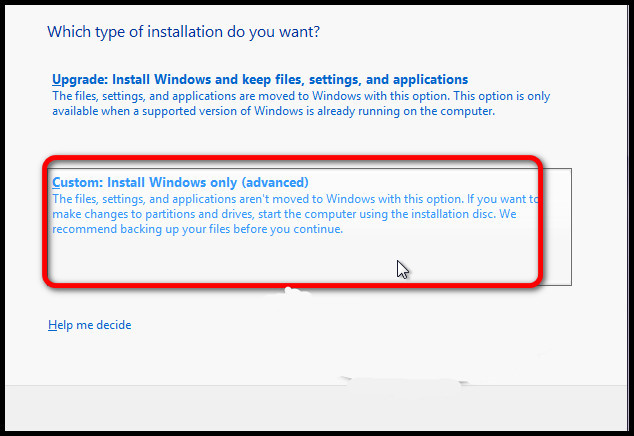
- Click on the partition you created and hit the format option.
- Select the partition again and click Next from the bottom right.
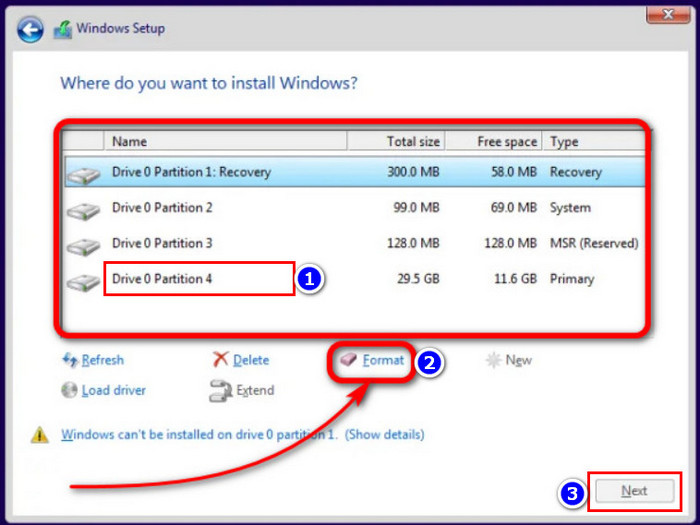
After completing the steps, the Windows installation process will start. You need to wait that time.
6. Log into Windows
After a successful installation, Windows will ask you to set up some options. Choose according to your preference. You will see your PC boot into the operating system for the first time.
After that, you should restart your PC, and immediately after the motherboard logo, you’ll get a screen with options. It means the Dual boot is successful.
How to Dual Boot Windows 10 and Windows 10 on Separate Hard Drives
You can install multiple operating systems, such as Windows 10 or 11, on a different storage disk and dual-boot them. And it’s easier than installing them on the same HDD or SSD.
To install a second operating system on a separate hard drive, you need to prepare a bootable USB disk, adjust your BIOS settings, and start the installation process directly. No additional steps are required.
Here are the steps to dual-boot Windows 10 on separate hard drives:
- Plug in the bootable USB drive and restart the PC.
- Click the Install Now button.

- Select I don’t have a product key option at the bottom.

- Select the version of Windows you want to install and click Next.
- Choose Custom: Install Windows only (advanced).

- Click on the partition named Unallocated space and hit the New option.
- Select the partition again and click Next from the bottom right.

You can create a new partition on the disk with any amount of storage space. But I recommend you allocate at least 40-50 GB of space for the operating system.
The standard Windows setup will start after that. And after completing, you can use the two OS simultaneously.
FAQs
Is dual boot possible with Windows 10?
Yes, Installing two operating systems in a PC is possible if it fulfills the minimum installation requirements. But you must create a new partition containing at least 20 GB of storage.
Can I dual-boot Windows 10 and 11?
Yes, but you need separate licenses and accounts to dual boot both without violating the Terms of Service of Microsoft.
Is using dual boot safe?
Yes, installing and using a dual boot system with both Windows and Linux is safe. However, note that there are risks involved with any system configuration changes, so you should back up important data before proceeding.
Conclusion
Setting up a dual-boot system may seem intimidating, but you can quickly achieve it by following the proper steps. After reading the article, I’m sure you know the appropriate way to dual-boot Windows 10. But make sure to follow the steps correctly.
And comment if you face any issues with the steps. Peace!


